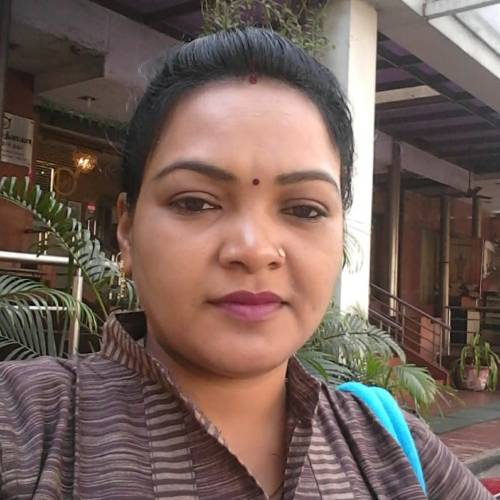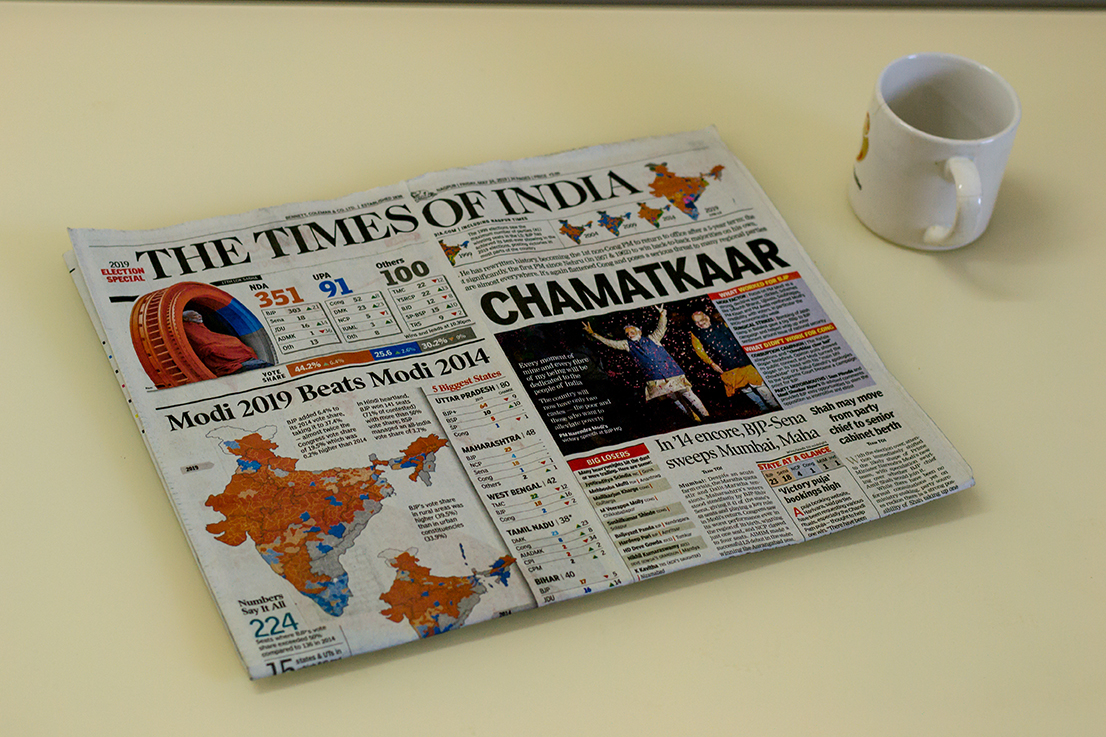
PUSHPA ROKDE, the sole representative for the Hindi language daily newspaper Prakhar Samachar (Fierce News) in the city of Bijapur, woke at 4am on a sultry morning this April. She sat cross-legged on her bed, and began writing the first of the five or so stories she files most days.
She cooked, cleaned the two-room house she rents in a violence-ridden district of the city, which is in the central Indian state of Chhattisgarh, and stepped out of the door to her house, past an uncovered sewage pipe which brings the dirt of the whole street right to her, and went to work.
The newspaper she works for, Prakhar Samachar, which is based in the state capital, Raipur, 250 miles away, says it has a circulation of 45,000 copies a day. Bijapur is a conflict zone, where the Indian state has been fighting a 30-year battle with armed left-wing rebels who oppose large mining industries. Rokde, who is 36, has three main appointments that day—with the local motorcycle dealer, the superintendent of police and the local legislator.
All three wanted to place advertisements in the paper—the motorcycle dealer announced a discount on his products, the legislator, who had been recently elected, wanted to thank his electorate and the police officer wanted to publicly flaunt a medal a junior officer had won for bravery.
They were all within a two-mile radius, so she used a three-wheeled motorbike, called an auto-rickshaw. At each stop she folded her hands in greeting (namaste) and they paid her for the advertisements. She was done by noon. "Now is the time to do real work," she said.
She called fellow journalists from neighbouring districts, chatted with the local street vendors and exchanged pleasantries with some low level government officials. "They are my sources," she said, "I get my stories from them."
In most parts of northern India, journalists are hired more as advertising agents than reporters. They are given geographic beats in which to sell adverts, usually to the great and good that they must also, when they find time, report on.
"They will not even check if I am reporting on any stories," Rokde, who is listed as an agent, not a reporter, said. Her beat is to cover the district of Bijapur, which is almost the size of Luxembourg and has a population of a quarter of a million people. She takes 30 percent of the advertising she sells, which amounts to about $7,000, or half a million rupees, a year.
"It is an added bonus for the newspapers to get journalistic stories from them," said Sevanti Ninan, a senior journalist and author of the 2007 book Headlines from the Heartland: Reinventing the Hindi Public Sphere.
The total circulation figure for the 120,000 newspapers in India, 18,000 of them dailies, is 430 million—the largest in the world, as of 2018. Most are in Hindi — the language spoken by many people in the country. Many newspaper owners have invested in other industries—India doesn't have a law against cross ownership.
The production cost of a newspaper is about seven times the sales price. Advertising makes up the difference. Which means newspapers feel they need ad sales agents a lot more than they need reporters. "There is no incentive to do news at all," said Rajan Usendi, a freelance reporter and news agent for many Hindi newspapers in Bijapur. He files stories when he feels like.
Rokde paid $700 (50,000 rupees) for the right to sell ads in Bijapur in 2007, and two years later she also began distributing 3,000 copies daily. She writes stories, mostly, because she loves to write stories. They're usually between 200 and 500 words, and she sends them via WhatsApp to an editor in Raipur. "They make cosmetic changes to grammar," she said, but not much beyond that.
That means she is on her own as she tries to balance her financial needs with her desire to report on the powerful, usually political, figures she also relies on to place adverts. She must walk an impossibly fine line — the dilemma of newspaper owners in America, but contained within one person.
Close to 900 million people, roughly the population of continental Europe, voted in the recent general elections in India. They did so based on a flawed information economy, driven by well-intentioned agents put in a difficult position, that struggles to deliver the most basic news without a tortuous balancing act.
A quick glance at Rokde's work over the last year shows that she has managed to report on stories that would make the authorities uncomfortable, but generally she's deft with facts and attempts to accommodate multiple views.
Her husband Nitin, who has the same job in the neighboring district of Dantewada "is a bit hot headed," Rokde says. "Sometimes, his relationship with the authorities goes downhill and that means he doesn't get good stories," she said.
But Pushpa is teaching him tact.








